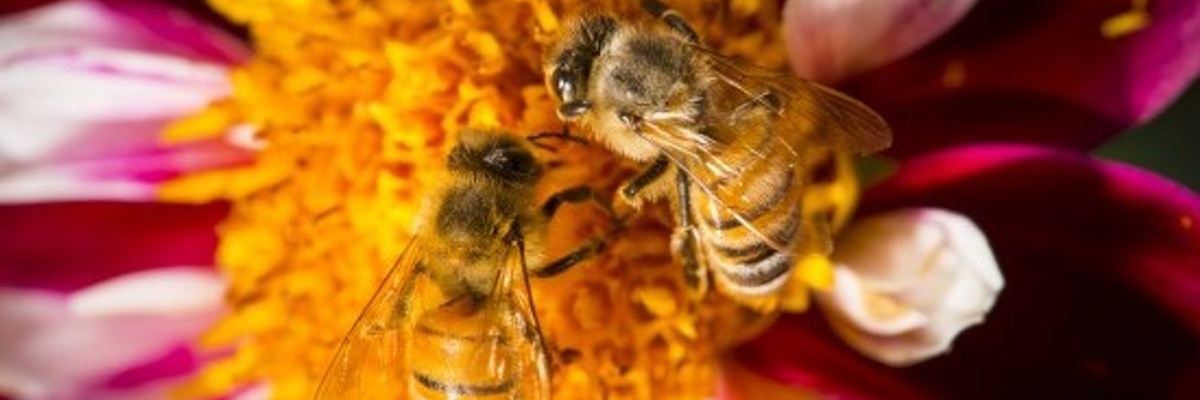

Whether you are a farmer of many acres, land manager of a large tract of land, or a gardener with a small lot, you can increase the number of pollinators in your area by making conscious choices to include plants that provide essential habitat for bees, butterflies, moths, beetles, hummingbirds, and other pollinators. Happy planting!
Whether you are a farmer of many acres, land manager of a large tract of land, or a gardener with a small lot, you can increase the number of pollinators in your area by making conscious choices to include plants that provide essential habitat for bees, butterflies, moths, beetles, hummingbirds, and other pollinators. Happy planting!
June 29- Our garden has been a busy place. Last week children made ice cream in the backyard. Over the weekend a children's beekeeping program was held. Tomorrow giant inflatable dinosaurs are coming to the back lawn. It's wonderful to have large numbers of visitors viewing our garden.
Today I trimmed back the cherry bells (campanulas) under the crab apple tree in front. They have pretty much finished blooming and the bees have lost interest in them. With rain in the forecast for the weekend, I drained down the rain barrel giving the water to our newer plants. The artemesias planted on June 15th are perfectly happy.
Scrolling back through this blog, it's been eleven months since our monarch caterpillars appeared last summer. Ursula is monitoring the milkweed in anticipation of 2022's caterpillars.
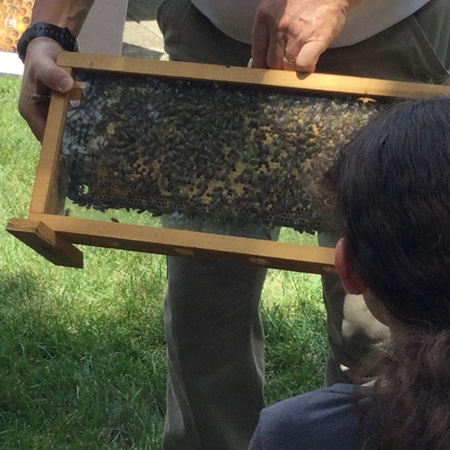




June 22- Summer has arrived and little trace of the spring garden remains. The tradescantia, columbines and rose campion are gone. I pulled the messy dried daffodil foliage today. I also trimmed the bearded iris foliage. Unfortunately Nokesville is home to a population of iris borers. A little brown moth lays an egg on an iris leaf. The caterpillar crawls down the leaf, munching as it goes. Then it tunnels into the iris rhizome (root) and eats that too. Trimming the foliage in June and November or December breaks that cycle without using pesticides. In our hot, dry summers, iris foliage gets ratty anyway so trimming it improves the appearance. If your iris clumps are crowded, now's the time to thin & replant them as well.
The backyard pollinator garden is in full bloom and alive with a variety of native bees. On Saturday a children's program on bees will be held and our bees are ready.

Note the full pollen sac on this bee's legs!
June 15- rain + hot weather = growth
This week in the garden our October Skies asters which are supposed to be about 18" tall are twice that height and sprawling through the pollinator garden. Today I cut back the branches that were infringing on the gravel path. Late blooming plants like asters and mums can be trimmed back in June to create a bushier plant with more flowers. This is called the "Chelsea chop" because the timing coincides with the Chelsea flower show in England. I cut back half of each aster today so in fall we can see whether our Chelsea chop resulted in more flowers.
In the front garden, I added two Powis Castle artemesias. Powis Castle is grown for its' fluffy silver foliage. It is nearly evergreen (ever gray?) in our climate. It's getting late for spring planting but they were super cheap and Powis Castle is a tough plant. Despite the heat, I expect they'll thrive.

With the recent rain, our milkweed is thriving and attracting quite a few visitors. We are keeping an eye out for monarchs over the next few weeks. The entire garden is awash with color.
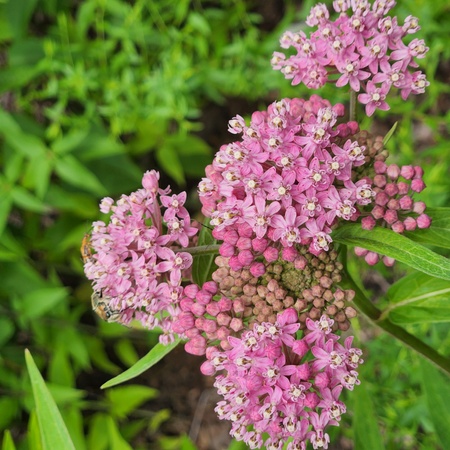
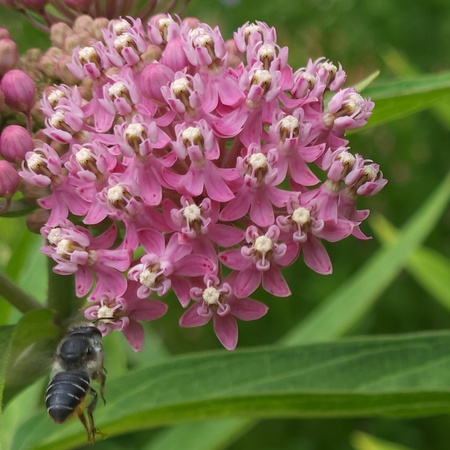
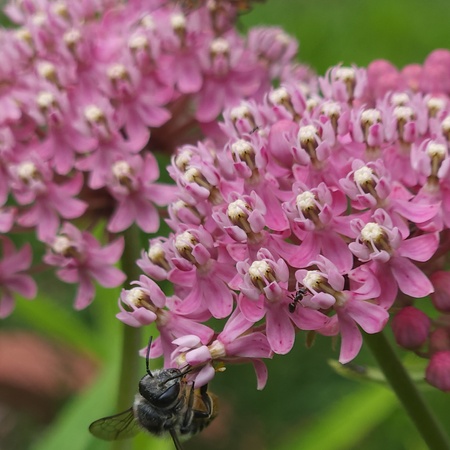


Last week Ursula suggested adding another swamp milkweed to the backyard garden. Initially I thought it would be a tight fit. But she's right, more milkweed foliage feeds more caterpillars. Every butterfly we raise is a gift to the ecosystem. So one more milkweed will join our garden tomorrow. Who knew a library could be a butterfly factory?
First Swallowtail caterpillars spotted! Daily visits from the cabbage whites and plenty of bees enjoying the garden.


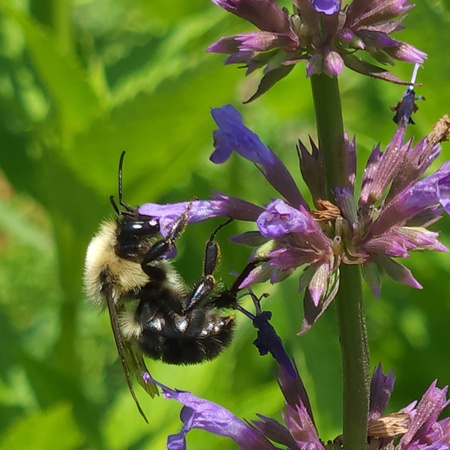


June 8- Fauna: our rock-n-roll birdies have flown the coop. I opened the box this morning and removed the empty nest. Being a mother bird must be exhausting and some bird mommas are tempted to reuse nests. This can spread disease so it's best to remove the old dirty nest after the babies depart.
Butterfly sightings include monarchs, swallowtails and cabbage whites. No caterpillars yet (fingers crossed).
Flora: it's daylily week! They're all in bloom. Also, the cherry bells campanulas under the crab apple tree are starting to bloom. In the pollinator garden, the coneflowers are amazing... their blooms are the size of salad plates.
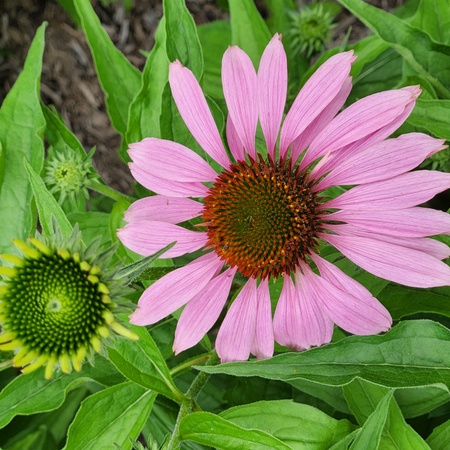


Cecily, we have swallowtails!
June 1- Fauna: the bird family occupying the birdhouse are LOUD! We have some party animals living in there. The babies must be close to fledging to be so raucous.
Flora: the daylilies are budded and a few are in bloom beside the book drop.

May 26- Blooming this week: a drift of rose campion welcomes visitors as they arrive, the brilliant magenta flowers intensified by the contrast of its' silvery foliage. Speaking of silver, large shimmery globes of flowering onion, allium christophii, light up the area next to the patio. Smaller globes of campanula glomerata are a rich purple. The rush like foliage of tradescantia weaves among its' companions and the flowers offer two more shades of purple. Purple is good.
May 18-We are so excited to see our first Monarch visitor at the Nokesville Library! Hopefully it will invite many friends to lay eggs over the next few months.

May 18 - First the bad news: that freakish thunderstorm on Monday afternoon flattened the blooming peonies.
Good news: a wren is nesting in the birdhouse. This bird has an aggressive personality and an enhanced vocabulary. She had quite a bit to say when I opened the birdhouse to peek at her nest. Then she buzzed around just above my head until I closed it and backed off.
I added three nepeta Walker's Low to the pollinator garden since the bees have been enjoying the nepeta in the front garden so much. I also added two large pots in the front garden for summer color. One contains a purple Amistad salvia under planted with purple calibrachoa. The other contains an orangey red cigar plant (cuphea) under planted with red calibrachoa. All plants involved are popular with hummingbirds.



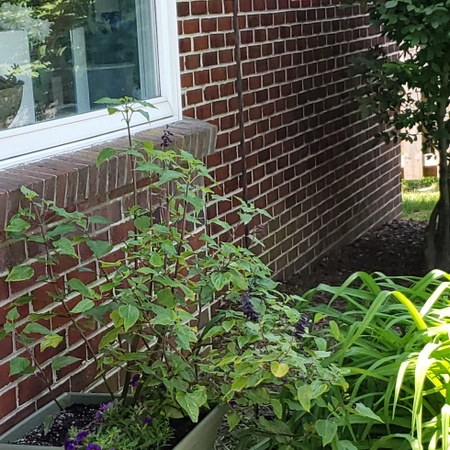
Pictures, please :)
May 9 - Three inches of rainfall left the rain barrel full and the garden is bursting with new growth. The bearded iris are blooming and the peony buds are swollen. Those laggard peonies didn't bloom last year (weird, they've been very reliable) but this season looks promising. Bumblebees are enjoying the nepeta Walker's Low in the front garden. I'm going to add a few of those in the back also since it's a bee favorite. There are seven nepeta plants in front but when the bees like it so much we can't have too many, right?
April 29 - The front garden is a haze of blue and purple flowers (nepeta, bluebells and columbines) with red azaleas dotted along as accents. Beautiful. The bearded iris are budded and showing color also.
In the back garden, little green shoots have appeared at the base of the swamp milkweed. Intellectually I know that milkweed is the last perennial to break dormancy and crape myrtle is the last tree to foliate but it's always a great relief to see them come to life. Journey North shows monarchs slowly heading our way. Monarchs need three generations to reach us after they leave Mexico. As long as the milkweed is up and growing by July, it'll be ready when the butterflies arrive.
George, I used the rain barrel to water the new plants. It's about half full and showers are forecast for next week.
April 20 - Despite last night's freezing temperatures, the garden looks great. The daffodils have finished blooming and now it's time for the tulips and Spanish hyacinths to strut their stuff. I added four more agastache "Blue Fortune" to the pollinator garden to replace one kalimeris that died and create a thicker stand of agastache. That was the most popular bee plant last year. Among the echinacea "Magnus" coneflowers I found seedlings. Yay! When a plant you like reseeds itself that's a bonus. The swamp milkweed has not broken dormancy yet but that's normal.
George reports no visitors to the hummingbird feeder yet. Not to brag, but the feeder on my deck now hosts two hummingbirds, a male (red throat) and a female (cream throat). I'm wondering what dorky names my husband will assign to the hummers.
Hey you guys, the hummingbird feeder on my deck had a visitor this evening ;)
April 9 - Thank you to George for draining the rain barrel. All of our spring rains occurred in one week this year :(
This week in the garden, my charming and talented spouse hung a bee house along the tree line in back. There are 5000 species of native bees in North America. About a third of them nest in tunnels bored into tree trunks by beetles or in hollow reeds. In our area mason bees and leaf cutter bees are common. A bee house looks like a bird house with the front missing. Inside it contains bundles of bamboo shoots (hollow) and pieces of wood with holes drilled into it.
Tunnel dwelling bees are solitary, they don't live in hives or make honey. A female bee will collect lots of pollen and make a glob of pollen mixed with bee spit and nectar. She places this glob at the far end of a tunnel then lays an egg beside it. After the egg is layed, she seals off the compartment with a dab of mud (mason bee) or a mouthful of plant pieces (leaf cutter bee). Then she collects more pollen and nectar and places another food blob in the same tunnel. She lays a second egg then seals the compartment. This continues until she fills her tunnel. The eggs hatch and eat their pollen. The larvae remain in the tunnel over winter. In spring they emerge as adults.
Since the Nokesville Library is located adjacent to a wooded area, our mason bees and leaf cutter bees don't really need a bee house. But some of our nature loving library patrons who live in neat-n-tidy suburbs may feel inspired to hang a house for their bees. It's a cute conversation piece that gets people thinking about the life cycle of our native bees.

August 12- News Flash: We have tenants! Several tubes are capped with mud indicating bees have nested in them. It's gratifying when the critters seem to like what we're providing for them.
6 Participants
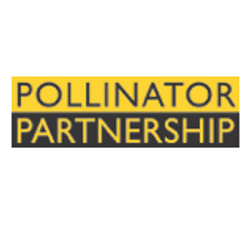
Travel hives are so cool! I could watch a bee hive for hours. I'm glad the kids enjoyed their activities.